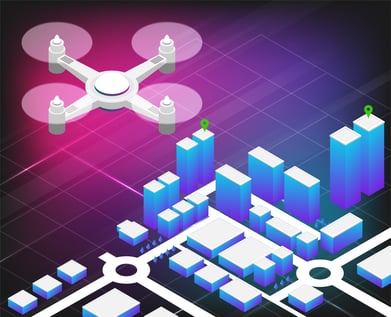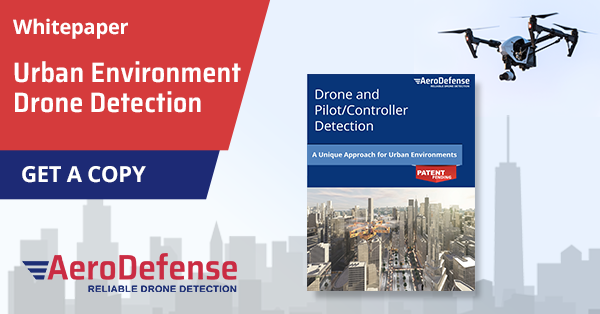“Citywide Drone Defense with a Few Sensors'' is gaining popularity. It sounds great doesn’t it? There’s more than meets the eye here. Let’s dive into what we mean.
Mostly physics will prevent “Citywide Drone Defense with a Few Sensors” from working well.
Radio Frequency (RF) based drone detection systems typically work better with line of sight while radar/optical detection systems rely completely on line of sight to operate effectively.
To gain the best line of sight in a citywide deployment with a low number of sensors, the sensors must be placed on the tallest buildings around the city perimeter.
Note that if the system is particularly bulky, buyers may have a difficult time obtaining approval from the building managers to mount the equipment for aesthetic reasons but also because the building owners do not want their properties to become targets.

Low-flying drones will be blocked by buildings between them and the sensors placed on tall buildings.
Drones transmit signals down to their controllers so detection systems will struggle to detect them until they are as high or higher than sensors.
There will be too many alerts.
Since drones can be flown legally in many urban areas, too many alerts for friendly drones will desensitize security teams to true threats.
Drone mitigation is not an option, and the pilot will not be located without supplemental ground-based sensors or breaking the law.
Mitigation
It is too dangerous to disable a drone over an urban area where clueless/careless hobbyist flights are prevalent.
A two-pound object falling from a few hundred feet in the air will cause significant people/property damage on the ground.
When it comes to nefarious actors, it’s worth noting that the pilot could set their Return-to-Home location to be their target if the drone’s signal is jammed so it’s super-important to find the pilot.
Locating the Pilot
One AeroDefense customer says that watching a drone fly around over your property is like watching a fly buzz around your house. You need to know where the pilot is so security forces can do something about it.
Therefore the safest mitigation tactic is to find the pilot before the incident, whether intentional or accidental.
The problem with sensors mounted on the tallest buildings is that controllers will almost always be blocked from the sensors by other buildings, so it will be difficult to locate the offending pilot without supplemental ground-based sensors.
The only reliable way these super-elevated sensors can find the pilot without ground-based sensors is to extract signal information from the drone’s communications channel which violates Federal surveillance and privacy laws.
Customers should not be put at risk for equipment confiscation, jail time and financial penalties by their vendor.
Is Citywide Drone Defense Possible?
The answer is yes, with the right deployment configuration.
AeroDefense agrees that citywide drone defense is necessary. Entities should deploy permanent drone detection sensors, especially at critical infrastructure locations.
In order to supplement the airspace awareness that permanent sensors provide and help locate the pilot, security teams and/or local law enforcement can utilize drone-detection equipped response vehicles/marine vessels.
As far as legality, no one should be allowed to deploy a system that demodulates private WiFi signals and lessens the public’s right to privacy, especially citywide!
Our spectrum sensing methodology for detection does not extract signal information and utilizes publicly broadcast WiFi information just like a cell phone sees WiFi networks or a GPS system uses WiFi for location accuracy.
[Blog] How Many Drone Detection Sensors Do I Need in an Urban Environment
[Webinar] Drone Detection in an Urban Environment: Challenges and Feasible Solutions



